What kind of coffee is Robusta? Indian boutique Robusta coffee beans vs. Arabica flavors
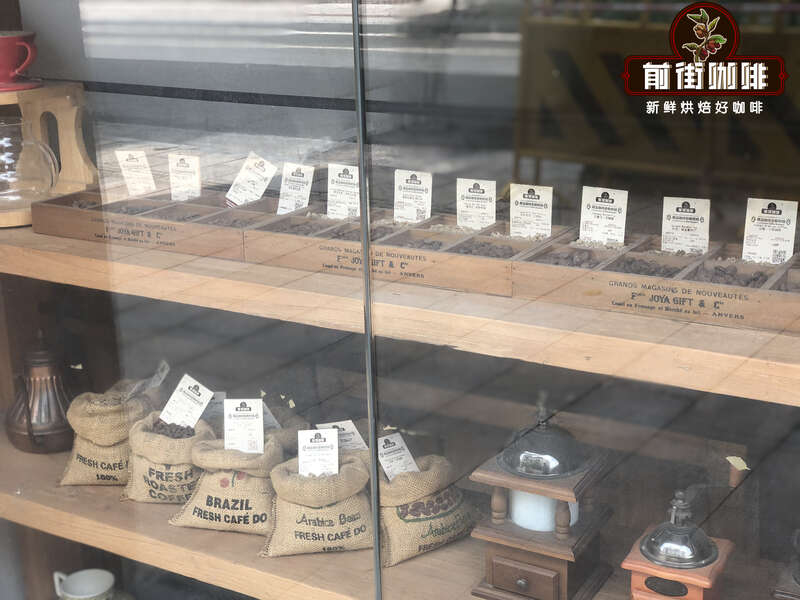
Professional coffee knowledge exchange more coffee bean information please follow the coffee workshop (Wechat official account cafe_style)
The biggest feature of Robusta is that it grows faster than Arabica and is more resistant to extreme weather. About 30% of the world's Robusta species are now. Robusta, which Qianjie thinks is of good quality, tastes better than Arabica beans of poor quality. Robusta coffee beans are commonly used as the blending of Italian coffee beans to enhance the mellow feeling of coffee. The commercial blending of Italian coffee beans in front street coffee with wine flavor adds 10% Luodou, which makes the concentrated taste mellow and rich in oil. Next, let's talk about Robusta coffee beans on the front street.
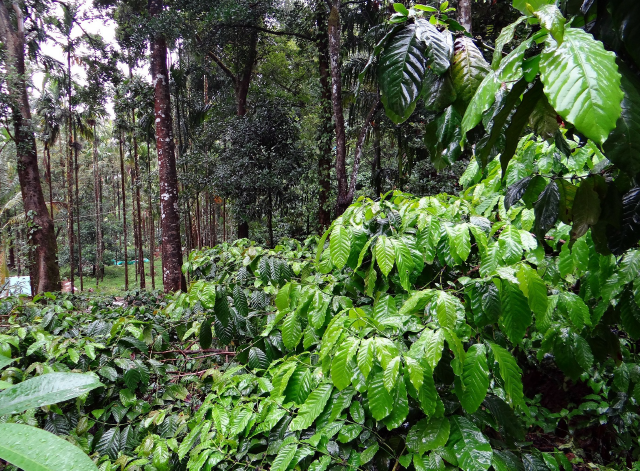
The origin of robusta coffee beans
Robusta originated in the Congo region of West Africa, and we often compare Arabica with Robusta, but this is not rigorous because the two are not the same botanical level at all. Robusta actually belongs to the Canefa species, also known as the Congolese species, just as Ironka belongs to the Arabica species. But unfortunately, there is only one species called Robusta in the Canefra species that can be commercialized and well known, so that now Robusta has almost replaced Canefra as a synonym for the species.
How to distinguish robusta coffee beans
Robusta coffee beans are one fruit and one bean. The shape of Robusta is round and C-shaped, while the middle line is zigzag, and the color of raw beans is yellowish brown.
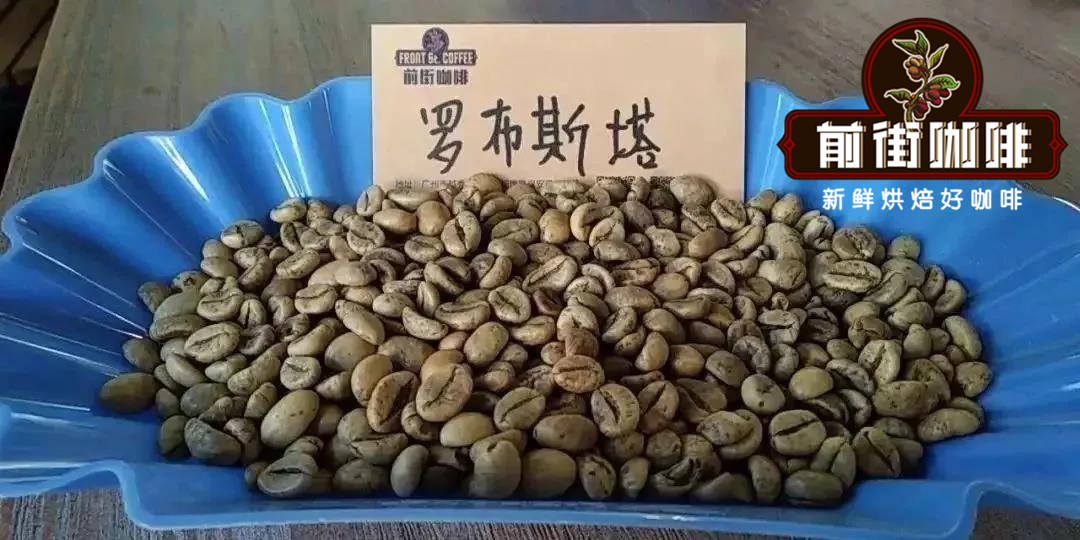
Robusta's dominant growth conditions: the global coffee growth belt lies between the Tropic of Cancer, and Robusta is no exception. But Robusta's growth conditions are not as harsh as Arabica. Robusta can grow at lower elevations and higher temperatures. It grows faster than Arabica and is more tolerant to extreme weather conditions. Robusta is widely planted in Vietnam, Brazil, India and other countries. Among them, China's Hainan also grows Robusta. Qianjie coffee often talks about the exquisite flavor of coffee beans, with two basic conditions, one is to have excellent Arabica varieties, and the other is to grow at high altitude, so the low-altitude cultivation of Robusta coffee beans and the relationship between varieties, the flavor will be relatively low and mellow.

Insect resistance: Robusta's caffeine content is 2.7% Mur4%, twice that of Arabica. Caffeine, as a natural pesticide in plants, can be protected from most insects.
Disease resistance: Arabica species have 44 chromosomes, while Robusta has 22 chromosomes; generally speaking, the more chromosomes there are, the more complex and advanced the genes are, but Arabica is self-pollinated and Robusta is cross-pollinated. Pollination involves heredity. In general, plants obtained by cross-pollination are of higher quality-offspring produced by cross-pollination have the genetic traits of two parent plants, which are likely to produce new characteristics that help it survive in a changing environment. So Arabica, which is self-pollinated, is very fragile, and the genes become more and more single in the process of reproduction (without the participation of foreign genes), so if some diseases (such as leaf rust) occur, coffee balls with the same gene may be wiped out. The strength of Robusta lies in its ability to adapt to the environment by constantly changing its genes.
Robusta's inferior flavor: just now Qianjie also mentioned that Robsta's flavor is due to the relationship between low-altitude planting and the variety itself. compared with Arabica, Robusta has higher contents of caffeine, amino acids and chlorogenic acid, and chlorogenic acid is the source of bitter taste. so Robsta is born without the elegant aroma of Arabica beans, replaced by a fuller, lower taste. And walnuts, peanuts, hazelnuts, wheat, grains and other flavors, and even pungent soil flavor. Robusta is often spurned by the boutique coffee industry because of its poor flavor, so it is commonly used to mix beans or instant coffee with Arabica.
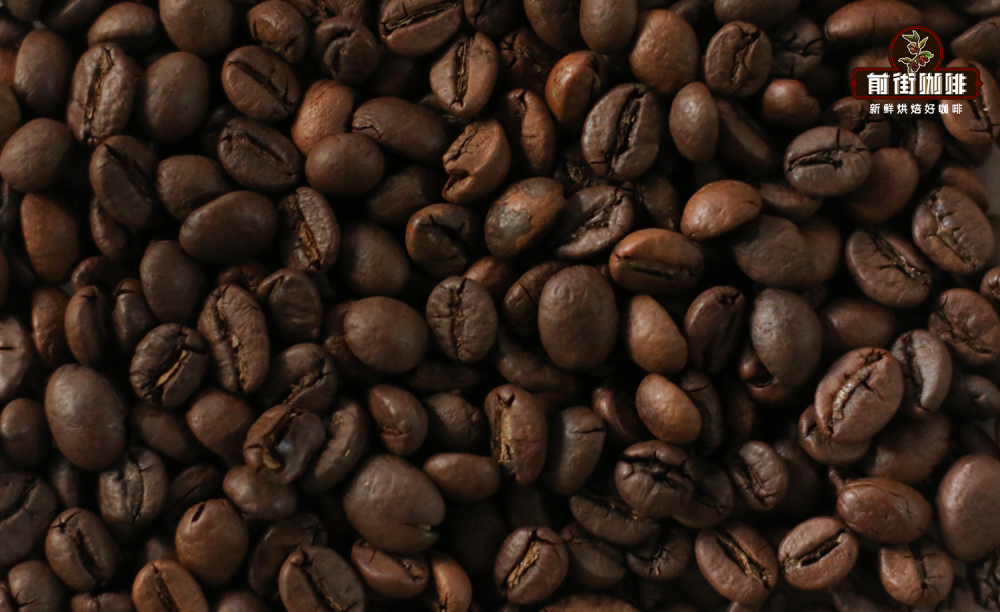
Since Robusta is not picky about the growing environment and has high disease resistance, and Arabica coffee beans are relatively rich in flavor, will there be a hybrid coffee variety between Robusta and Arabica? Yes! Katim is a hybrid of their two breeds. Katim coffee variety
Katim is a combination of Arabica and Robusta, which has good resistance to leaf rust and rich oil, high yield and easy to grow. Katim has 25% of the Robusta gene after crossing with Arabica. Katim has 25% of the Robusta gene, which improves resistance to leaf rust, retains rich oil, and has the rich taste of some original species of tin card. Katim is the most common coffee variety grown in Yunnan. There is a small grain of Katim coffee among the Yunnan coffee beans on the front street.
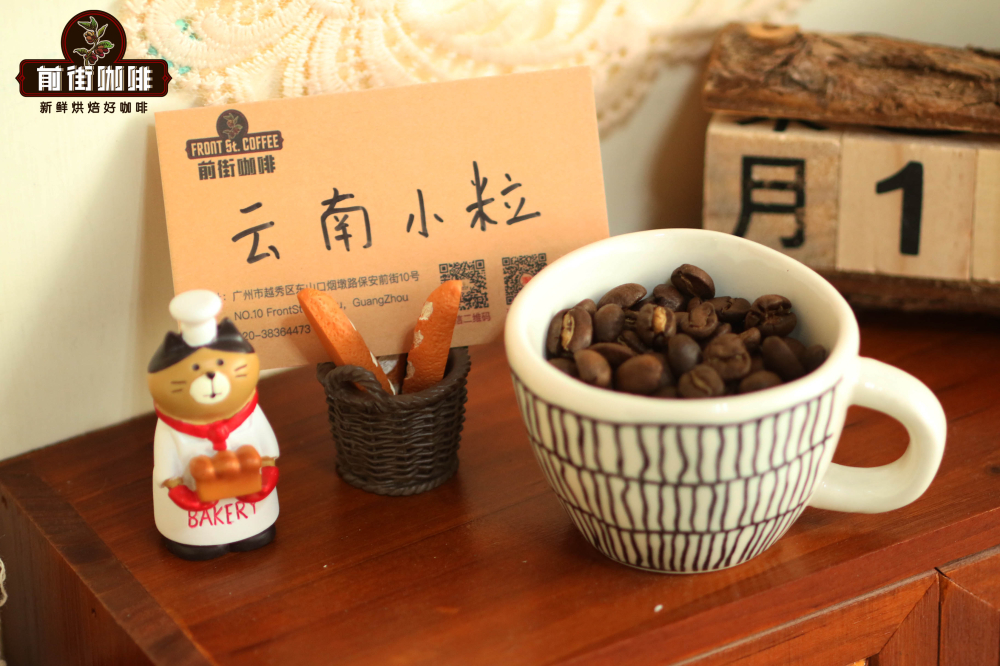
Qianjie Coffee Yunnan Katim small Coffee
Producing area: Baoshan, Yunnan
Altitude: 1200 m
Variety: Katim
Treatment: washing treatment
Washing treatment method
Due to the perennial rainy season and unstable climate in Yunnan Province, most of the coffee beans in Yunnan are treated by washing. Use a peeling machine to separate most of the pulp from the coffee beans, then guide the shelled beans to a clean sink, soak them in water and ferment to completely remove the residual pulp layer. In the past (about five years ago), washing was often the first choice for good coffee bean treatment.
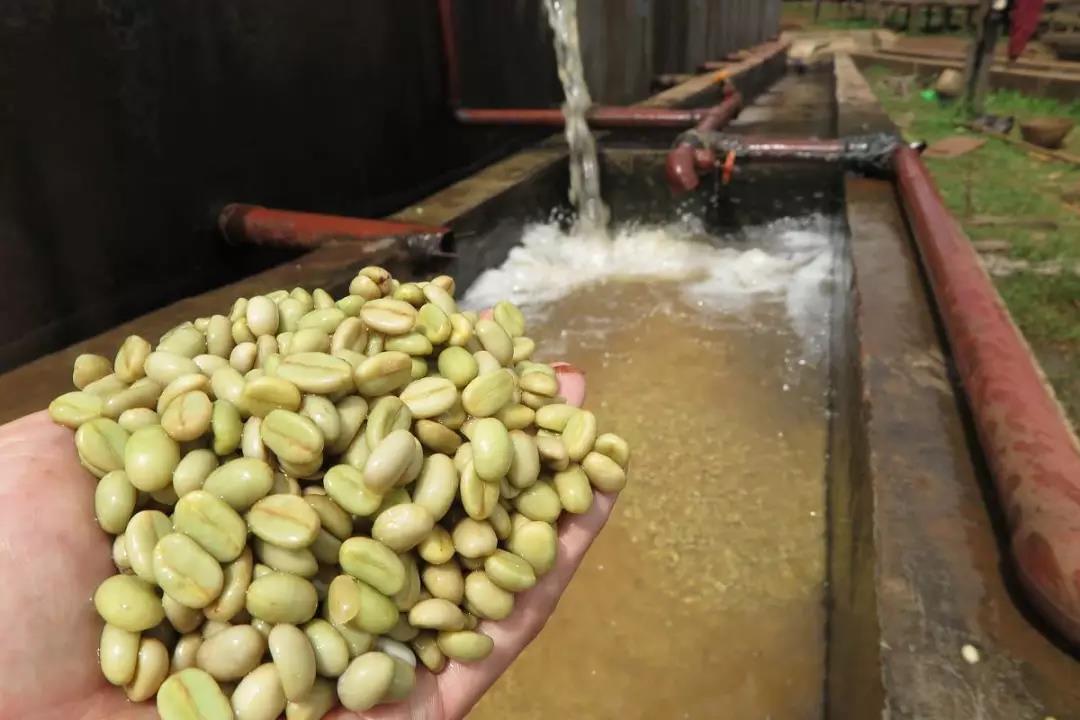
Through water treatment, unripe beans and defective beans are selected because of buoyancy, and the fermentation process is easier to control, so the flavor is not mixed like sun beans, but shows obvious acidity, complexity and cleaner (without any negative flavor, such as astringency or sharpness).
Suggestion on coffee baking in Qianjie
Yangjia 800N (300g baking capacity): furnace temperature 190 ℃, firepower 120, throttle open 3; temperature recovery point 1, temperature 39 ℃, throttle 4, firepower unchanged; when furnace temperature 166℃, bean watch turns yellow, grass smell disappears completely, enter dehydration stage, when furnace temperature reaches 188℃, firepower is adjusted to 60 ℃, throttle is 5.

The smell of toast obviously changes to the smell of coffee, which can be defined as a prelude to an explosion. At this time, it is necessary to listen clearly to the sound of the explosion point. When the sound of the explosion point begins to explode, the throttle will remain unchanged. After an explosion, the development will take place for 3 minutes, and 198 ℃ will be put into the pot.
Coffee cup test report on Qianjie
The entrance is supple, the aroma of Asian herbs is lively and bright, the cheeks are lively and bright, the cheeks are sour, mellow and balanced, the layers are rich, and the flavors of dark chocolate, honey and sucrose are obvious. After complete cooling, brown sugar flavor.
Suggestion on brewing coffee in Qianjie
Qianjie Coffee recommends that when brewing Yunnan coffee, it tends to be balanced, which does not need to highlight the acidity and modify the tail segment too much. The amount of coffee powder is 15g, the ratio of powder to water is recommended at 1:15, the flavor can be clearer at 1:16, the filter cup is kono filter cup, the temperature of brewing water is 88 degrees Celsius, the aim is to make the acid softer and the size of fine grinding / fine granulated sugar (the pass rate of sieve 20 is 80%).
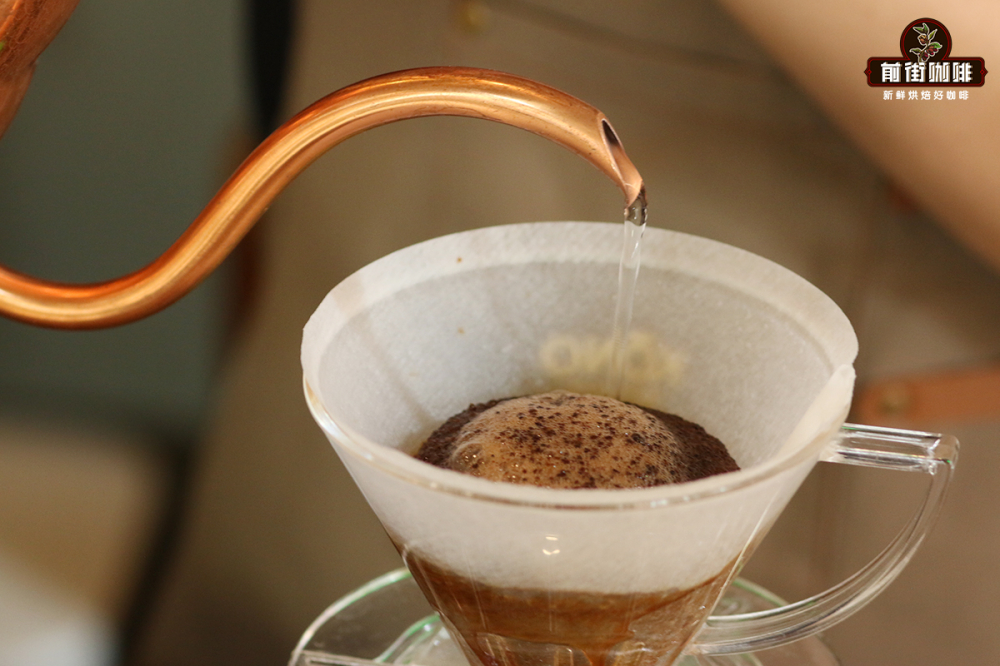
Qianjie sectional cooking technique: steaming with 30 grams of water for 30 seconds, injecting water around the circle to 125 grams for segments, continuing water injection to 225 grams when the water level is about to expose the powder bed, removing the filter cup when the water level is about to be exposed to the powder bed, (stifling starting time) extraction time is 2: 00 ".
Cooking flavor: nutty aromas, herbs, chocolate, caramel, with a hint of acidity in the finish.
At the end of the article, let's talk about the boutique Robusta coffee beans in the front street, yes! Robusta coffee beans also have boutique.
India's "India" Kappi Royale "Robusta": Kappi Royale means "top grade". At present, at least four private coffee estates in India have grown "Coffee Royal" grade Robusta beans with the standards and procedures of boutique Arabica beans.
The advent of the Royal Coffee boutique Robusta beans has undoubtedly begun to change the world's impression of Robusta. Most people who have drunk it will be surprised by its thick and clean characteristics. Because of the exquisite planting and handling procedures, the flavor of the Royal Coffee Robusta is mostly quite clean, without the inconvenient flavor of the cheap Robusta. The Robusta is born without the elegant aroma of Arabica beans, replaced by a thicker, calmer taste, as well as strong walnut, peanut, hazelnut and wheat flavors like peanut butter and hazelnut.
For more boutique coffee beans, please add private Qianjie coffee on Wechat. WeChat account: kaixinguoguo0925
Important Notice :
前街咖啡 FrontStreet Coffee has moved to new addredd:
FrontStreet Coffee Address: 315,Donghua East Road,GuangZhou
Tel:020 38364473
- Prev
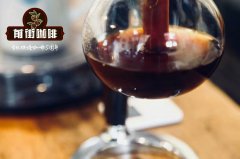
Will Robusta, the revolutionary boutique of Robusta coffee, become a trend?
Professional coffee knowledge exchange more coffee bean information Please follow the coffee workshop (Wechat official account cafe_style) Robusta Coffee people are used to seeing things in dichotomy, and so are good and bad, good and bad, good and bad in the coffee world. Arabica coffee beans are always classified in the good category, its distant relative Robusta
- Next
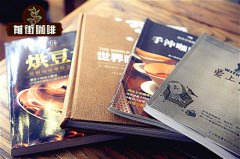
The Manor Story of Love Sage of Panama introduces the boutique miniature manor that has been shortlisted for dozens of times in BOP.
Professional coffee knowledge exchange more coffee bean information please follow the coffee workshop (Wechat official account cafe_style) Panama Valentine Manor Coffee Story: Panama Finca La Valentina has been shortlisted for dozens of B.O.P boutique micro manor covers an area of about 12.5 hectares, in Panama is a miniature small estate, of which 8.5 hectares, planted varieties from
Related
- Detailed explanation of Jadeite planting Land in Panamanian Jadeite Manor introduction to the grading system of Jadeite competitive bidding, Red bid, Green bid and Rose Summer
- Story of Coffee planting in Brenka region of Costa Rica Stonehenge Manor anaerobic heavy honey treatment of flavor mouth
- What's on the barrel of Blue Mountain Coffee beans?
- Can American coffee also pull flowers? How to use hot American style to pull out a good-looking pattern?
- Can you make a cold extract with coffee beans? What is the right proportion for cold-extracted coffee formula?
- Indonesian PWN Gold Mandrine Coffee Origin Features Flavor How to Chong? Mandolin coffee is American.
- A brief introduction to the flavor characteristics of Brazilian yellow bourbon coffee beans
- What is the effect of different water quality on the flavor of cold-extracted coffee? What kind of water is best for brewing coffee?
- Why do you think of Rose Summer whenever you mention Panamanian coffee?
- Introduction to the characteristics of authentic blue mountain coffee bean producing areas? What is the CIB Coffee Authority in Jamaica?

